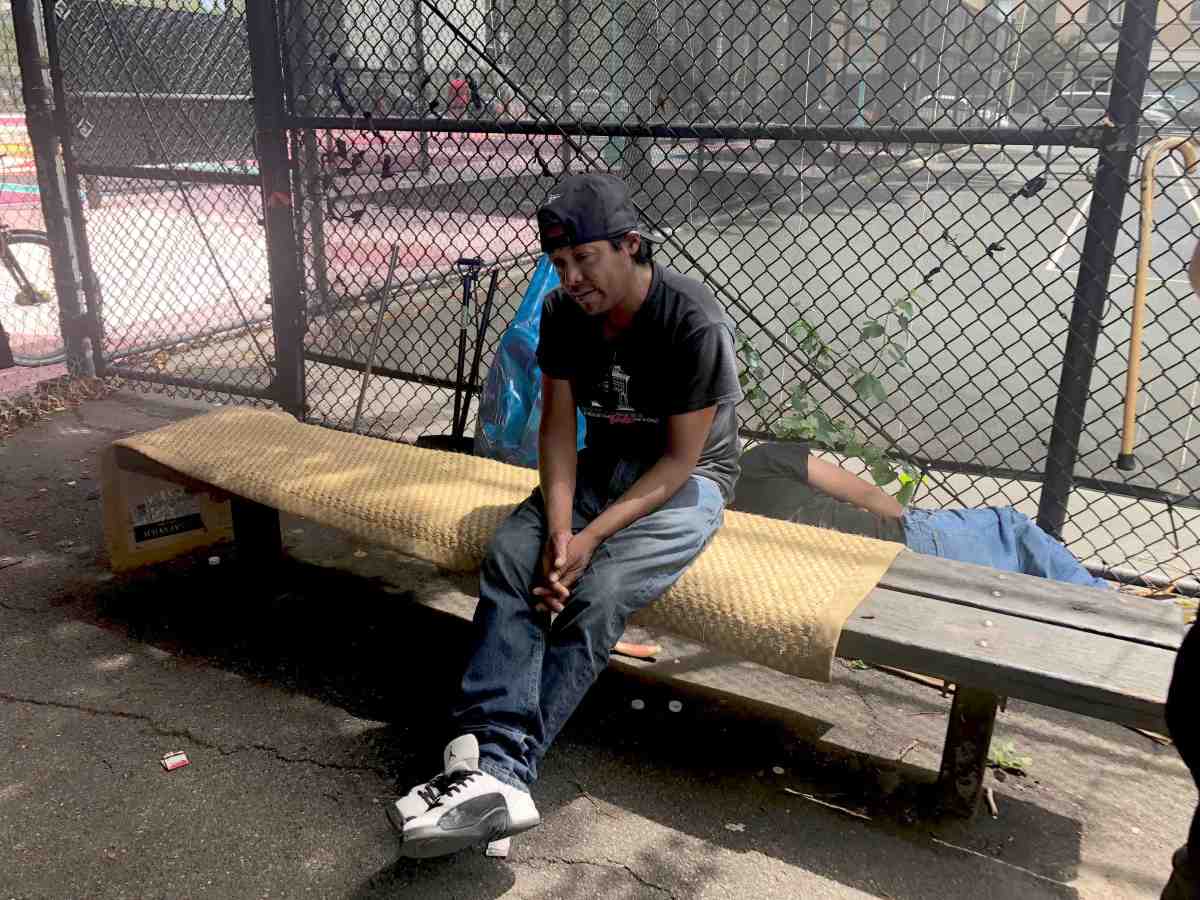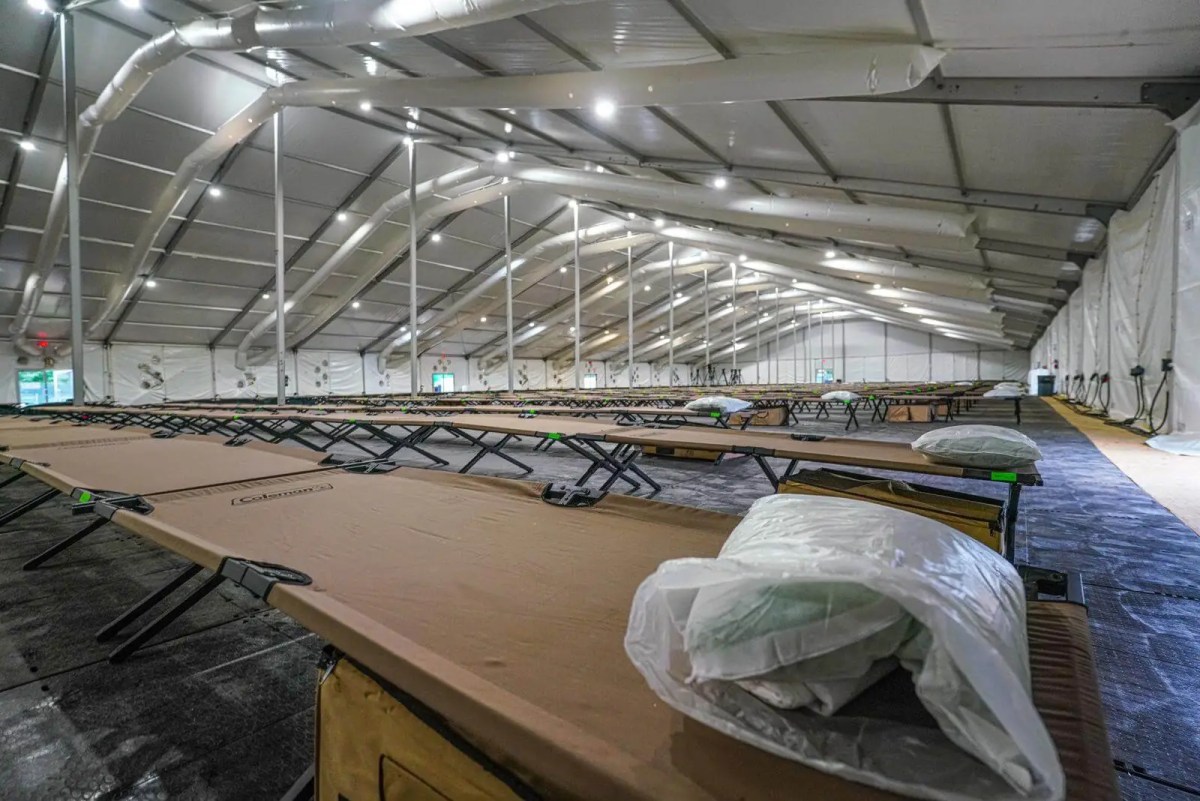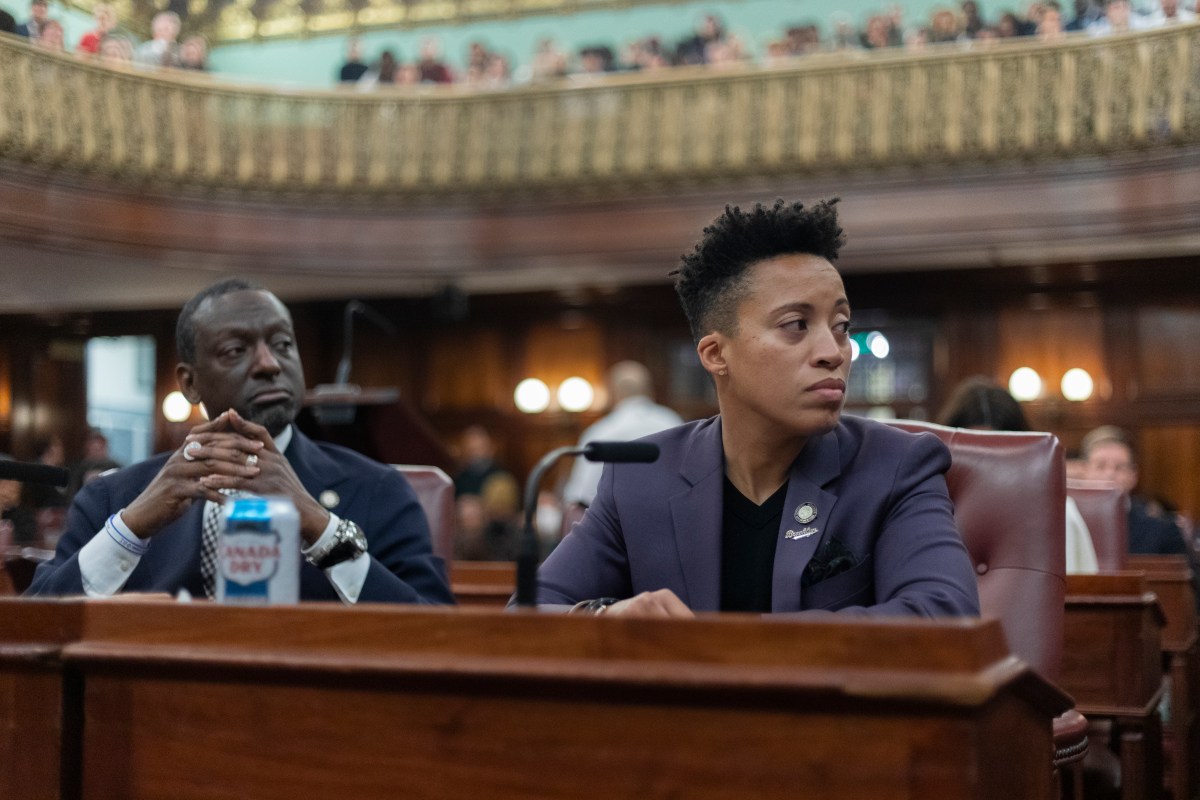Eduardo Gonzalez, a 43-year-old undocumented immigrant from Mexico, drained his 12-ounce can of Colt 45 malt liquor, and scootched a few benches away from the other homeless people to tell his story.
It began with him painfully nodding at his mangled, swollen and throbbing right thumb, an injury that occurred while doing off-the-books construction work.
“I can’t move my thumb, see, and every time I attempt to work, they pass over me because of it. They won’t let me do anything because of it. This happened to me a couple of months ago, but since then I haven’t been able to work so I turned to the streets,” said Gonzalez. “I had a family – my two little girls and wife left me since then.”
And so it goes for a growing demographic in Northern Brooklyn – homeless, undocumented, and drug and alcohol dependent.
For Gonzalez and more than a dozen men and women this means an encampment beneath a blue canopy and hidden by shrubbery off the street between the basketball, and tennis/handball courts at a New York City Housing Authority (NYCHA) development.
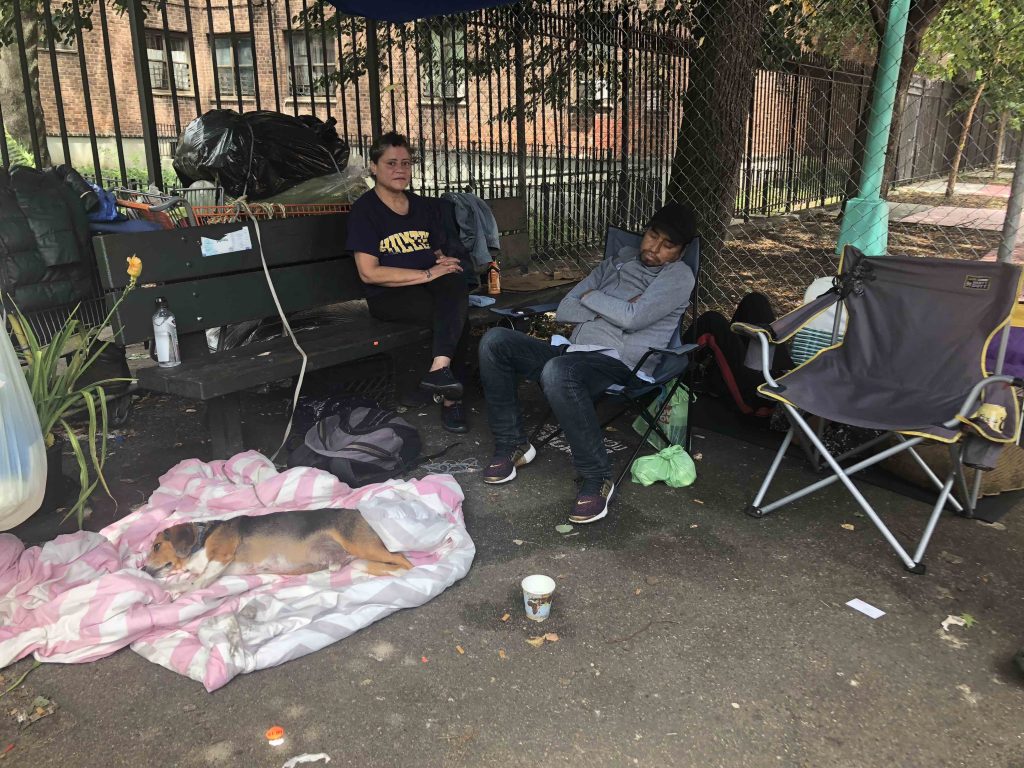
A local resident who goes by the name of Deshon said the residents who play on the courts have adopted the group, and help feed and take care of them, as they fear deportation if they go to a homeless shelter. Making matters worse, the zero tolerance policy of the Trump Administration has driven many undocumented residents to be pushed into the dark, and to not seek help for their drug dependence and other issues for fear of being deported.
Department of Homeless Services (DHS) spokesperson Isaac McGinnis acknowledged this fear, but said U.S. Immigration and Customs Enforcement (ICE) officials have not conducted any raids on the shelter system in 2017 or so far in 2018.
“As always, we protect the privacy of any and all confidential client information shared with DHS for the purposes of determining program, service or benefit eligibility or the provision of City services,” said McGinnis.
However, the threat of deportation is very real for these immigrants who have been scared off by recent tales like the one of an Ecuadorian immigrant, Pablo Villavicencio, who was held for deportation after he attempted to deliver a pizza to Fort Hamilton military base in Brooklyn.
And thus far this band of immigrants have been able to keep themselves safe and under the radar with help from the local community, including one area drug dealer who supplies the group with several forms of recreation.
“I come to them like twice a week, check in on them and make sure they’re okay. I like to take the guys out to play some soccer to give them a break from their situation,” said a man who identified himself as Juan.
Unfortunately, this scene is becoming normal in this area of Brooklyn that tends to skew more Latino and Black. Public spaces, like Sternberg Park, bordered by Montrose Avenue and Lorimer, Leonard and Boerum streets, have now become enclaves for the homeless, including undocumented immigrants and their addictions.
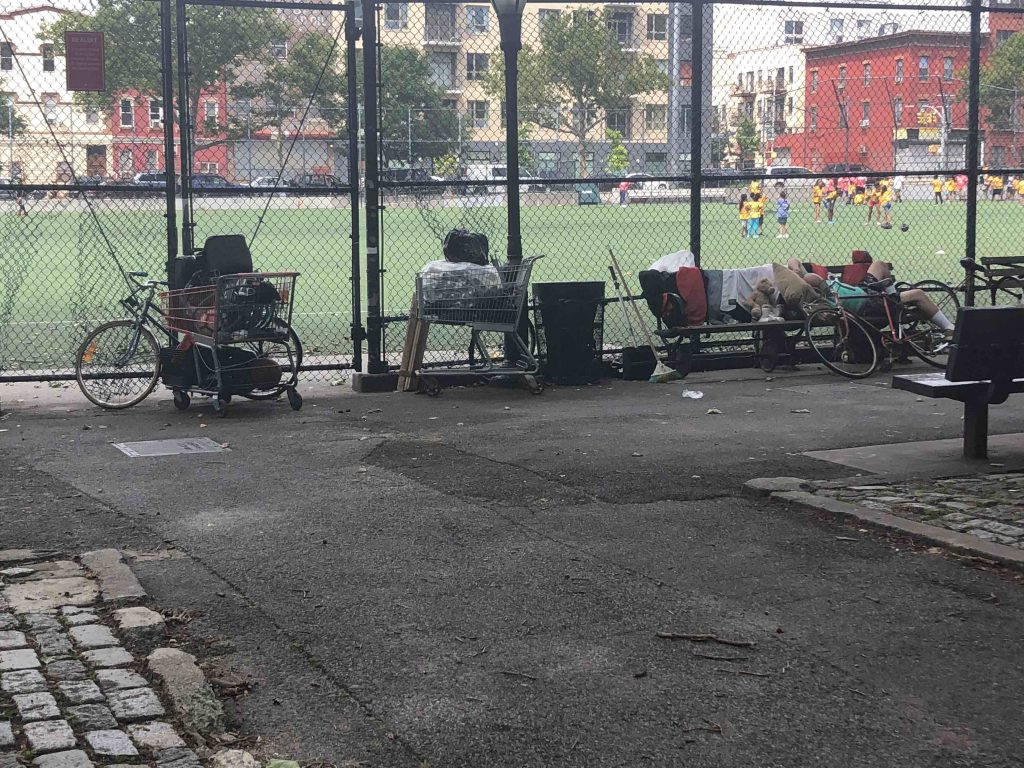
One resident picking up his daughter from the park has noticed the increase of homeless in the park in recent weeks, and claims it’s one of the few places that serves as a safe haven for them.
“I mean I’m fine with it. This is the only place they can get away from the gangs [Trinitarios and Latin Kings],” said the resident.
The Trinitarios made headlines earlier this summer in the brutal stabbing of Lesandro “Junior” Guzman-Feliz in the Bronx in a case of mistaken identity.
Kristina Naplatarski, spokesperson for City Councilman Antonio Reynoso (D-Williamsburg, Bushwick), who represents the area around the park, said Reynoso is aware of the growing homelessness in the district.
The councilman has been continuously working with DHS to help the growing number of homeless immigrants seeking solace on the city’s streets, Naplatarski said.


